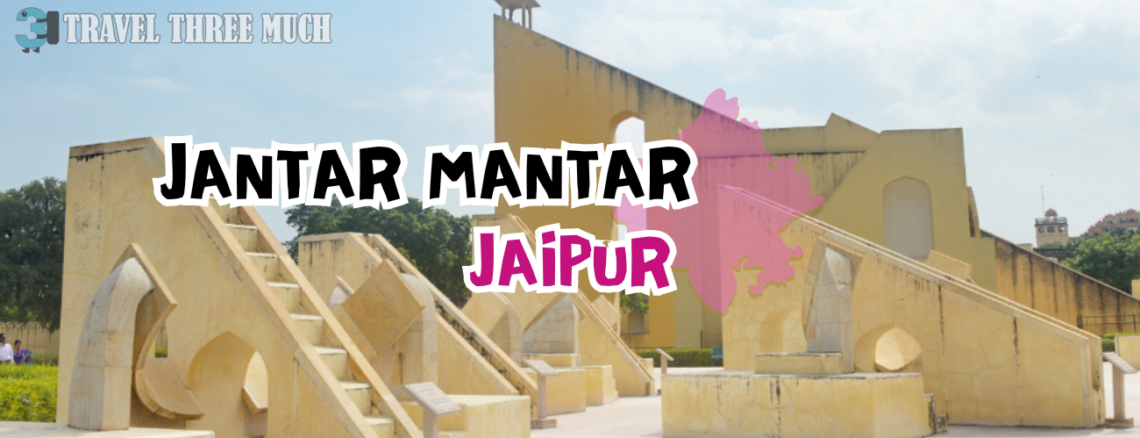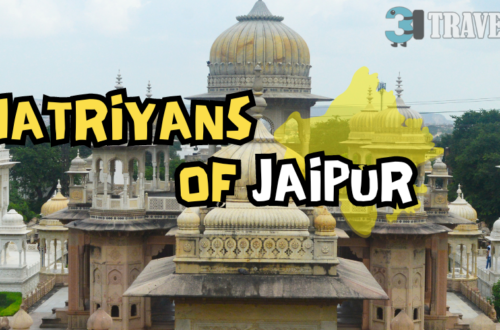
Jantar Mantar, Jaipur
Jantar Mantar was constructed by Maharaja Sawai Jai Singh II in the 18th century. There are four other such astronomical observatories built by the same king – in Delhi, Ujjain, Mathura and Varanasi.
Some of these are the largest instruments built in their category and are very advanced in terms of their precision.
Astronomical and Astrological significance
The guide was quite knowledgeable about the astronomical and astrological significance of the instruments.
From our guide, we understood that the pursuit of precision for the calculation of time seemed to be driven by a two-pronged need.
Firstly, to be free of dependency on the Islamic almanacs being referred to for agricultural milestones, which were becoming increasingly inaccurate due to the lack of correction factors for astronomical events.
YOU MAY ALSO LIKE :, OUR 4 DAY JAIPUR ITINERARY
Secondly, the more immediate inability to accurately record the time of birth and prepare the ‘birth chart’ which relied on the accuracy of birth time and location of birth. The birth chart is an Indian astrological element that plays a crucial role in the individual’s life decisions ranging from choice of education to compatibility with one’s partner. It was astonishing to see that provisions had been made to calculate the birth time with a great degree of accuracy irrespective of the presence of the sun or moon.
The only precondition seems to have been reasonably clear skies.
Some of the yantras that can be found in Jantar Mantar Jaipur are listed below. There are many, and do read up on them before you visit the place. The details of which can be found in the official website.
Note: The word ‘yantra‘ simply means instrument.
Samrat Yantra
The Samrat yantra which is also referred to as the Supreme sundial and can measure time to an accuracy of two seconds.

Laghu (Small) Samrat Yantra
The small Sun dial or the Laghu Samrat Yantra is the instrument which is also used for time calculation. One of the side walls of this instrument is at an angle of 27 which is the latitude of Jaipur. There are two quadrants and both are divided by 6 hrs., 60 min. and each minute by 60 seconds. Based on the position of the shadow, the time is calculated.
Narivalay yantra
The Narivalay Yantra is an equatorial sundial that also works based on the latitude of Jaipur.

Rama Yantra
The Rama yantra and the Digamsa yantra are a pair of instruments. This instrument is used to observe the position of any celestial object.

Kranti Writa Yantra
In comparison to the other instruments at this observatory, the Kranti Writa Yantra is a small masonry brass instrument which has two brass circles. The circles help in the direct measurement of celestial latitude and longitude.

Jai Prakash Yantra

Rashivalaya Yantra
There are 12 Rashivalaya yantras – one for each rashi or zodiac sign. Each instrument measures the latitude and longitude of the celestial object of the respective constellations. This further helps in creating accurate horoscopes also based on the time of birth.

After a couple of enriching hours at this observatory, we headed towards the City Palace. My left brain had been given enough work for the day… time for the right one to take over!
YOU MAY ALSO LIKE :
A few tips:
- Do hire a certified guide. They will help you understand the function of the instruments.
- The guides tend to hurry a bit. So tell them beforehand that you need things to be explained slowly.
- We did one round with the guide and then one round on our own trying to recollect whatever he said. We did this by explaining to our kid about each instrument.
- A sunny day is the best to see the play of shadows and their role in the calculations.





